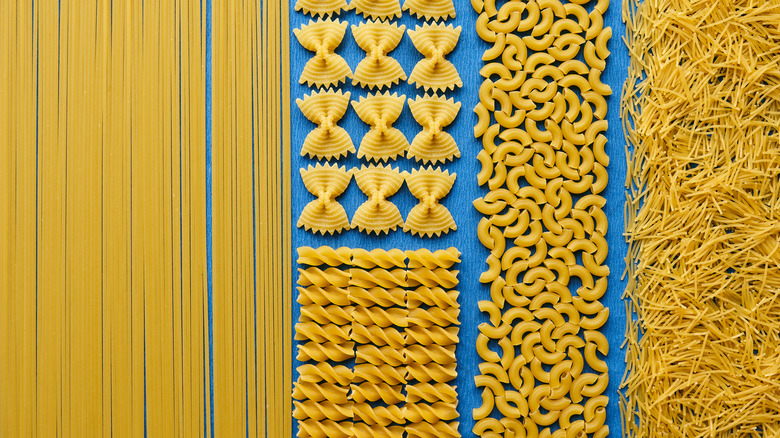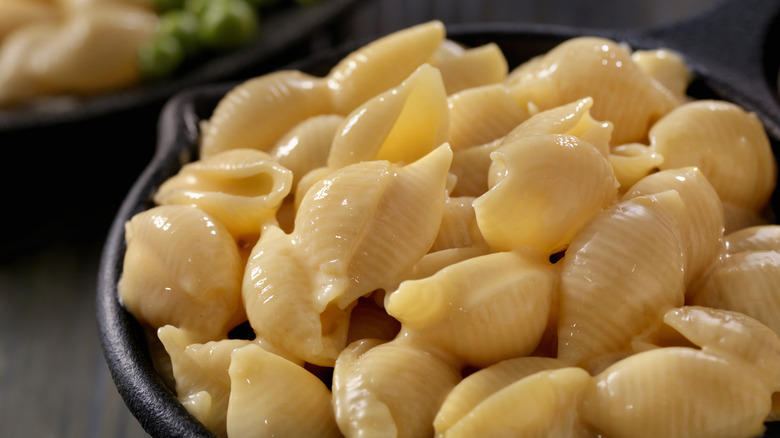The Best Type Of Noodles To Use For Mac And Cheese
Mac and cheese is a global phenomenon that has become a staple in American households, restaurants, and grocery stores alike. Whether you're grabbing a box of Kraft off the shelf or shredding the cheese yourself and making it from scratch, there's nothing quite like a bite of cheese-covered noodles. But with so many variations out in the world, it calls into question, "What is the best type of noodle to use for mac and cheese?" Well, in an exclusive Food Republic interview, we spoke to Beau Owens, Executive Chef at Tavola to get our answer.
"To get that creamy finished product of a traditional mac and cheese, you want to use noodles that are shorter and can absorb the moisture from the cheese sauce," Owens revealed. "Typically, you would like to see macaroni or penne." Macaroni? Used in 'macaroni and cheese?' Shocker!
But the thing to focus on in this case is knowing the best pasta shape to choose for your sauce. In the case of mac and cheese, as Owens points out, the fairly rigid shape and large surface area — thanks to the hollow center of elbow and penne pasta — allow for maximum cheese coverage. Especially in the case of thicker sauces, like in a basic mac and cheese recipe, which uses dense cheeses like cheddar and Gruyère, you need a noodle that is good and sturdy. How else are you supposed to get every last drop of sauce off your plate?
Using other noodles for mac and cheese
Now we all know that mac and cheese is far from being the only pasta dish that is based around a cheese sauce. Dishes like cacio e pepe — an Anthony Bourdain favorite — or chicken Alfredo typically feature noodles like spaghetti or fettuccine because the long surface of the pasta is great for silkier sauces. And as silky as your mac and cheese may seem, the cheese sauce is not typically grouped in the same category as something like Alfredo. So, as Beau Owens puts it, with mac and cheese "you can use other noodles; however, it is less common."
Note that if you're making homemade mac and cheese, and you don't have classic elbow macaroni, it's not the end of the world. Simply remember Owens' criteria of shorter and sturdier noodles; the more pockets for cheese to nestle into the better. Other great shapes to use that you don't have to travel to an Italian specialty store to find are lumache, which you might recognize as shells, and cavatappi, which are basically a longer, twirlier version of macaroni. These two shapes have the strength and appropriate amount of crevices to handle the thick and creamy mac and cheese sauce, and they boil quickly as well.
Even so, Owens uses an interesting alternative himself. "I have a wonderful angel hair and white cheddar dish that I serve often, and it is made the same way I make mac and cheese." Angel hair, also called capellini, is like a very fine spaghetti. Serve it with a creamy cheese sauce or bake it like a mac and cheese casserole for a unique texture that produces a dish you'll have to cut rather than twirl. Experiment with different shapes to find your favorite — start with something short and sturdy and then branch out.


